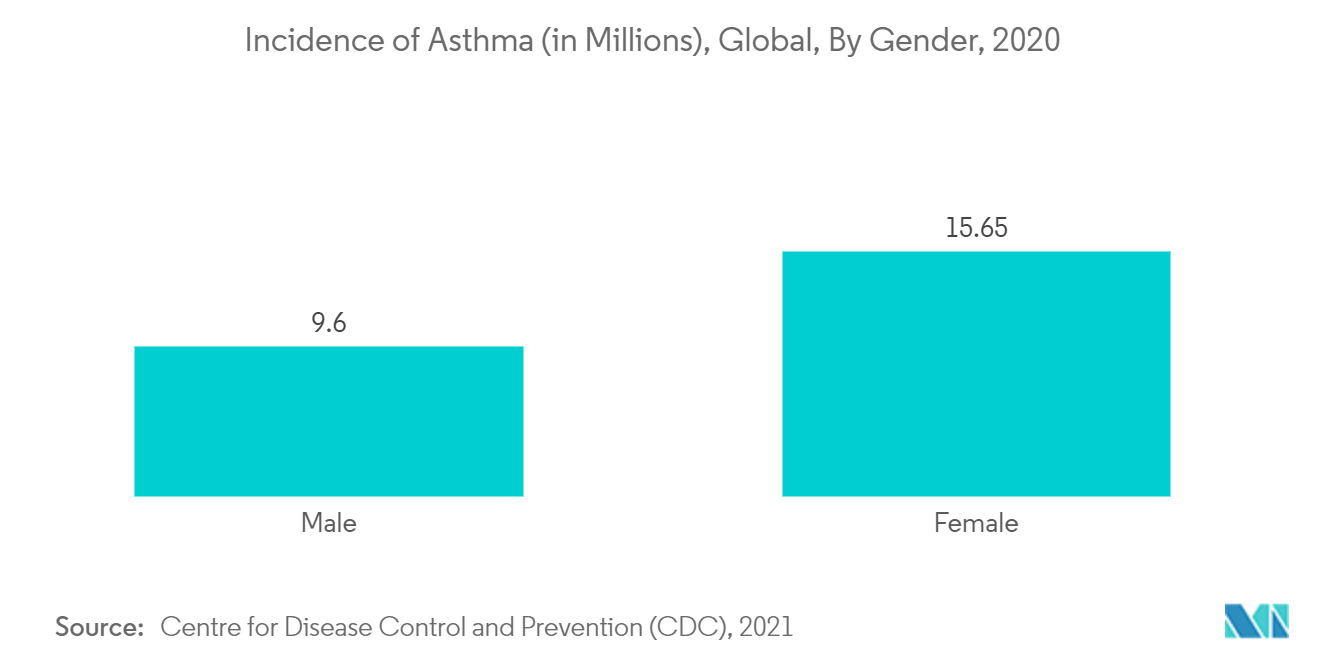Market Trends of Global In Vitro Lung Model Industry
2D Cell Models Segment is Expected to Witness Significant Growth Over the Forecast Period.
2D cell culture systems grow cells on flat dishes, typically made of plastic. The cells are put onto coated surfaces where they adhere and spread. The 2D cell cultures are mostly used as they are less expensive, well established, easier cell observation and measurement, and lots of literature are available on them. The 2D cell culture models are used in drug discovery and toxicology, 3D model development, and basic research. The other factors driving the segment growth are, increasing awareness and focus on developing alternatives for animal testing models and increasing investments and funding for product development and research.
In the last few decades, there has been an effort to develop in vitro lung models to study and understand the mechanism of various lung diseases, such as chronic obstructive pulmonary disease (COPD), idiopathic pulmonary fibrosis (IPF), and cystic fibrosis (CF). The cases of these diseases lead to the development 2-D lung model to understand the pathogenesis of these microbes. For instance, in 2021, the Centre for Disease Control and Prevention (CDC) reported that in 2020 globally, 21,030,479 adult cases and 4,226,659 children were reported to suffer from asthma. Thus, rising cases of these diseases are boosting the development of a 2-D lung model to understand the pathogenesis of this disease, thereby driving the growth of the segment.
The development of new therapeutics for the treatment of rising lung diseases requires advanced organ models that closely recapitulate the complexity of the human lung. Complementary in vitro, ex vivo, and in vivo animal models have been developed to study and understand various pulmonary diseases. In vitro models (2D cell culture) using epithelial cell lines are high-throughput and robust but are limited by their reliance on cell lines originating from cancer tissue or that have been immortalized.
For instance, an article titled, 'A Robust Protocol for Decellularized Human Lung Bioink Generation Amenable to 2D and 3D Lung Cell Culture' published in June 2021, reported that human lung tissues have been decellularized and enzymatically solubilized to form a bioink that can be used for 2D and 3D cell culture applications. Moreover, the results from this mentioned study indicated that the decellularized extracellular matrix(dECM) solution could be used to coat transwell inserts to enhance cell adhesion and growth. Such decellularized extracellular matrix (dECM) based bioink could potentially be utilized to fabricate in vitro lung constructs for modeling and studying various pulmonary diseases in the future.
Thus, due to the aforesaid-mentioned reasons, the segment is expected to witness significant growth over the forecast period.

North America Region is Expected to Witness Significant Growth Over the Forecast Period.
North America is expected to dominate the overall market, throughout the forecast period. The market growth is due to factors such as the presence of key players, increasing animal welfare programs and regulations, and established healthcare infrastructure. Furthermore, beneficial government initiatives and an increase in the number of research partnerships are some of the drivers expected to increase the market growth. Also, due to supportive healthcare policies, high investments for product development, strict regulations and acts regarding animal welfare and increasing programs and campaigns for their support, and a developed healthcare market.
The growing research on lung diseases is projected to offer growth potential for the in vitro lung model market in the region. The cases of asthma, lung cancer, and COPD have been rising across the globe at a significant speed. For instance, International Agency for Research on Cancer, GLOBOCAN database 2020 reported that the North American region in 2020 reported to have 254 thousand lung cancer cases and this number is expected to increase by 352 thousand by 2040. Thus, a high number of lung cancer cases is boosting the market for lung models to understand the better pathogenesis of this disease, thereby will lead to better cure and treatment of this disease.
Also, recent developments, partnerships, mergers ad acquisitions in the region are fueling the growth of the studied market in the region, For instance, in December 2021, Lonza Group AG and Agilent Technologies promulgated the strategic collaboration to integrate new analytical technologies with Lonza's Cocoon Platform. The collaboration aims to develop and integrate current and new analytical technologies into patient-scale cell therapy manufacturing workflows with the Cocoon Platform. This collaboration brings both companies a step closer to their commitment to developing sustainable technologies and solutions that increase access to life-saving cell-based therapies for various lung diseases.
Similarly, in September 2021, BICO subsidiaries CELLINK, MatTek, and Visikol promulgated the launch of a collaboration combining the expertise of the three companies to establish a contract research organization (CRO) with comprehensive bioprinting services. By forming a joint contract research organization (CRO), CELLINK, MatTek and Visikol have granted their customers access to offerings from all three companies. The partnership furthers the BICO groups' commitment to its Bio Convergence agenda by identifying synergies in the bioprinting business area to offer customers solutions trending toward the future of health. Thus, due to the aforesaid-mentioned reasons the region is expected to witness significant growth over the forecast period.


